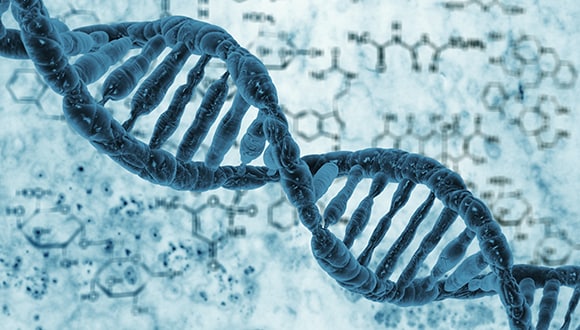Gene editing – the future of health?
From faster, cheaper research to potential cures for cancer, new gene-editing techniques are dramatically changing what’s possible.
Health Agenda magazine
July 2017
We’ve been genetically modifying plants and animals for thousands of years. The domestic dog, wheat and bananas are just a few of our success stories. However, recent developments in the scientific world are changing the way we can combat diseases, chronic illness and, possibly, antibiotic-resistant bugs.

The old ways of gene editing
In the 1970s, genetic technology shifted from the farmyard and garden to the lab with the advent of genetic engineering. Prior to that, our gene-modifying (GM) efforts were at the level of breeding two good sheepdogs together in hopes of creating a great sheepdog.
But with the discovery of how to transfer DNA from one organism to another, we started to create organisms that weren’t possible in nature – such as rice with daffodil genes for more nutrients and purple tomatoes with snapdragon flower genes for a longer shelf life.
While the science was impressive, it was also imprecise. It relied on scientists identifying the part of the DNA that needed to be altered in one organism, and the part that would be introduced from the other. The introduction of new DNA required “vectors” to get the new genes into the cells. The vectors were usually DNA molecules known as “plasmids” that are naturally found in bacteria. Each stage could have problems, and the process took time and tended to be costly.
Throughout the 1990s and 2000s, our understanding of the genome (the complete set of genes or genetic material in a cell or organism) dramatically increased. Scientists learned more about which genes did what, how genes can alter themselves in response to the environment, and even how some genes can actively alter the DNA of other organisms. They realised there were ways of modifying genes intentionally, effectively “editing” the selected gene in very precise ways. To use a rough metaphor, the old gene engineering was like making a cake batter, tasting it and then adding more vanilla essence to improve it. Gene editing is like making a cake batter, tasting it and then being able to take out some of the vanilla essence that has already been mixed in.
The rise of CRISPR
Early attempts at editing were hugely expensive and not always accurate, but in 2012–2013, Professor Jennifer Doudna of the University of California working with Professor Emmanuelle Charpentier and Professor Feng Zhang of the Broad Institute in Cambridge Massachusetts, independently published papers about a new, fast and accurate gene-editing system using CRISPR/Cas9.
Based on a method that bacteria use to defend themselves against invading viruses, the CRISPR/Cas9 system can be programmed for use in any cell. Zhang’s method gained popularity quickly because it could accurately edit DNA in plants and animals (including humans) comparatively easily and cheaply. Thanks to this system, work that once took years can now be done in months – and can be done accurately by researchers who no longer need years of highly specialised training to use this tool.
What about the risks?
For some people, the idea of gene editing is worrying. Despite the fact that it in many ways replicates natural systems, the speed at which it can alter genes and the idea of being able to create “designer” humans, for instance, make many of us uncomfortable.
Professor Rachel Ankeny, a bioethicist specialising in genetics at the University of Adelaide, points out that the scientific community has been openly debating and self-regulating CRISPR. “There is a voluntary moratorium in place on using gene-editing technologies to alter human germ cells (egg or sperm) due to concerns about safety, accuracy and social and ethical issues, including which uses of CRISPR should be permitted,” Prof Ankeny says.
Additional regulations in countries including Australia, the US and the UK mean that there are complex rules about modifying eggs and sperm, even in laboratory settings.
The potential of gene editing
The techniques of gene editing are still being refined and CRISPR has only been used in a small number of humans who were otherwise likely to soon die of their illnesses. “New therapies must meet standards of safety and efficacy,” says Prof Ankeny, and gene editing hasn’t – yet.
She can see such uses in the near future. “As far as humans go, the most likely beneficial uses of CRISPR will be with well-understood single-gene disorders such as Huntington’s disease or cystic fibrosis. Other likely applications include gene editing of crop plants, which might be more acceptable to many people than traditional genetic modification.”
To this list we may one day be able to add stopping serious diseases, antibiotic-resistant bugs and even the ability of mosquitoes to spread malaria.
Although Prof Ankeny is sympathetic to those concerned about designer humans, her work brings her into contact with people researching cures for debilitating illnesses and she draws a line between parents concerned about passing on fatal genetic diseases and those who want their child to be, say, good at football.
Related articles
HOW NANOTECHNOLOGY IS REVOLUTIONISING MEDICINE
Australia is leading the world in the miniaturisation of medical devices that will transform medical treatment.
PERSONALISING BREAST CANCER TREATMENT FOR BETTER RESULTS
Future breast cancer treatments are evolving towards targeted therapies individualised for each patient’s condition.
3D PRINTING IN MEDICINE
With the capacity to generate human body parts, 3D printing may soon revolutionise implant procedures.
THE FUTURE OF VIRTUAL REALITY IN MEDICINE
It sounds like the stuff of science fiction: bionic eyes, lifelike ‘pregnant’ mannequins and specialists practising delicate microrobotic cell injections without real cells...